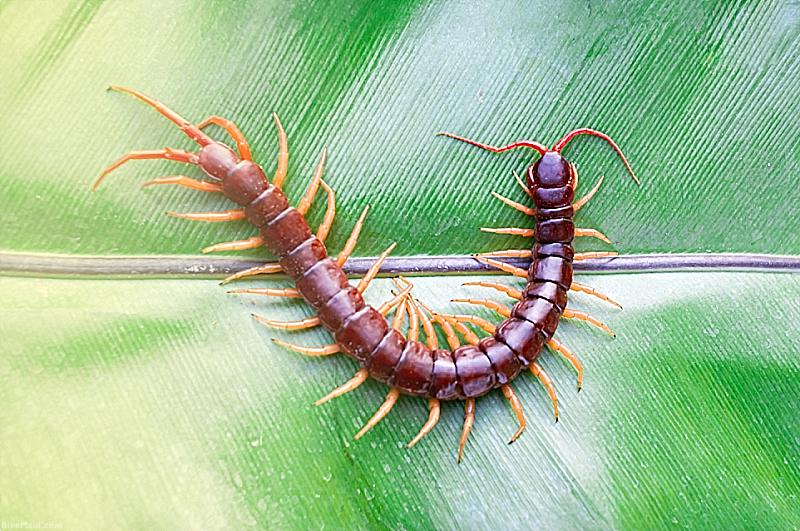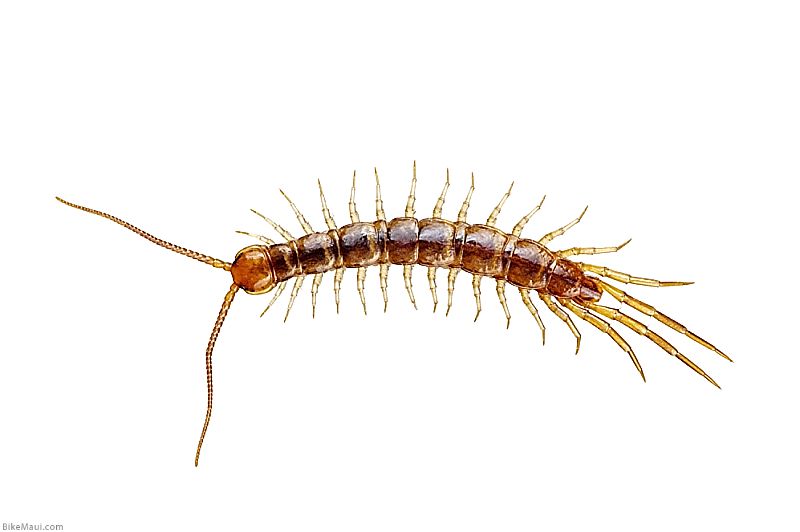Everything You Need to Know About Centipedes
Centipedes are long, multi-legged creatures that can be found in homes all over the world. While they may look dangerous, they’re actually harmless to humans, well, other than their painful bite. In fact, centipedes can even have pest control benefits since they feed on pests like insects and spiders. But does that make us like centipedes any less here in Hawaii?
Keep reading to learn everything you need to know about centipedes in Hawaii.

Appearance
Centipedes can vary in size, but the average length of many centipedes is between one and six inches. They have long, segmented bodies with two legs on each segment. Centipedes also have a pair of long, curved antennae. Their exoskeletons are usually yellowish-brown or reddish-brown in color.
Habitat
Centipedes are common pests and are found in a variety of habitats all over the world, including forests, deserts, and wetlands. Usually, Hawaii centipedes live outdoors, but during cooler months, they may venture indoors in search of warmth. Centipedes tend to prefer dark and damp places like basements, attics, and crawl spaces.

Diet
Centipedes are carnivores that primarily feed on spiders, crickets, and other insects. They use their long antennae to detect prey before attacking. Once they catch their prey, they inject it with venom that immobilizes it. The centipede will then wrap its body around their prey to keep it from escaping while it eats it alive. Cute, huh?

Creepy, Fun Facts
- Centipedes are fast runners and can travel up to 16 inches per second, which is equal to a human running at 42 mph!
- Centipede bites are rare but can cause redness, swelling, and localized pain at the site of the centipede bite, kind of like a bee sting, but in my opinion, worse.
- Centipede venom is not deadly to humans, but it can cause an allergic reaction in some people (If you get bit by a centipede and experience extreme swelling, extreme pain, or shortness of breath, seek medical attention immediately).
- Some species of centipede can live for up to 20 years! Great!
Hawaiian Centipede Bites and Experiences:
- My first experience was having a centipede run across my laptop at full speed. A good 6 inches long. I’ll never forget the tappity-tap of its creepy little legs on the metal.
- Killing them isn’t easy. We use those electric tennis rackets for flies, mosquitos, and smaller cockroaches. They don’t work on centipedes, though it does stop them long enough to catch them. We used to cut them up, but that’s messy if indoors. Now we trap them, throw them in a ziplock, and freeze them.
- I’ve been bitten while walking barefoot in the grass in Haiku more than once. A few weeks ago, I was bitten on my neck in the middle of the night! The thing was literally in my bed! I found him and got him.
- Rewatching my wedding video in Makena, walking down the aisle, I had a giant centipede climbing all over my suit. No one noticed, but I have the video to prove it.

Different kinds of Centipedes
Mecistocephalus Centipedes
Mecistocephalus centipedes originate in Sri Lanka and India but have been introduced to Hawaii. They’re not a dangerous species of centipede and possess 57-59 pairs of legs (114-118 legs altogether). These Hawaiian centipedes have yellow bodies with a redhead; their heads are longer than the Stone centipedes. Generally, they live in warm, damp environments, often hiding underneath debris such as heaps of decaying wood or leaves or in bunches of brush. It is thought that these centipedes may have arrived in shipping containers as adults or within clusters of eggs that were deposited into soil transported over from their native countries. These and Stone centipedes are the most common variants we personally see on Maui.

Stone Centipedes
Stone centipedes, the “Hawaiian Centipede,” are noticeably smaller than other species of centipedes. These arthropods usually measure only 1.5 inches in length. Their bodies are generally a combination of brown and maroon colors, with fifteen pairs of tiny legs (thirty in total), the front two being particularly sharp-looking claws. Although these pincers can be used to catch and immobilize prey, they do not possess enough strength to cause any harm to human beings. Stone centipedes prefer warm, damp climates and can often be discovered lurking beneath rocks and logs or among leafy ground coverings.

Vietnamese Centipede
Vietnamese centipedes are large arthropods that can reach up to 8 inches in length, though most centipedes measure between 4-6 inches in size and about an inch wide. Unlike worms which have a tubular shape, centipedes have flattened bodies segmented into multiple parts with two sets of legs projecting from each section. The term ‘centipede’ actually refers to their having 100 legs, though the number of legs on this species ranges from 15-177 pairs (or 30-354 individual limbs). The Vietnamese centipede has 22 pairs (44 legs altogether) and is capable of traveling at remarkable speed. They come in a variety of colorations, such as dark brown bodies with yellowish legs or yellow-brown torsos with orange appendages. On the heads of Vietnamese centipedes, they possess long antennae, while their front limbs possess sharp claws which are capable of injecting venom into their prey!

Now that you know more than you ever wanted about Hawaii centipedes, there’s less of a need to be afraid of these creatures the next time you see one on Maui. Remember, they are more afraid of you than you are of them, and as long as you leave them alone, they will do the same to you. If you do get bit, put some ice on it, and wait it out. Within a few hours, you shouldn’t feel it anymore. Good luck!





Thanks for a useful article. I did get chased by one across the old Hapuna. Beach pavilion when I was about 5 years old. You didn’t show the ones with blue feet though…Mine had bright blue feet and seemed enormous to a 5 year old. I got away!